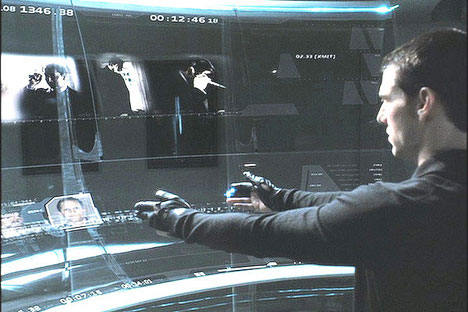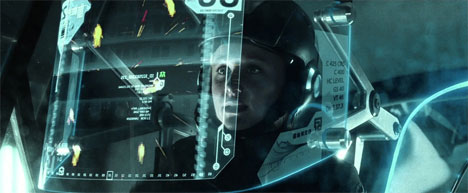
As small as our gadgets are getting, there is a physical limit to how tiny they can get. Keyboards and cell phones have to stay large enough for their keys to be pressable, and screens on phones and handheld computers have to be large enough to remain viewable. Since the physical components have these lower size restrictions, our gadgets logically can’t get much smaller than they already are. So where do we go from here? According to a German research project, we’ll soon use “imaginary” interfaces to control all of our devices without the need for physical interaction with them.

Much like the impressive futuristic interface in Minority Report, this predicted “imaginary” interface will operate entirely on gestures. Students at the Hasso Plattner Institute at Potsdam University, authors of a research study on Imaginary Interfaces, envision users programming their own interfaces that will operate based on visual memory. Users will decide which hand gestures will control their mobile device’s functions: a shape drawn in the air with a finger can answer a call, or making a pinching motion at a specific point in space can turn the device on or off. The difference between this concepts and other similar concepts is that this interface will be completely invisible and totally customized to and by the individual user.

The only physical object involved in the interface is a tiny device that attaches to the user’s clothing and contains sensors to interpret the user’s gestures. Currently the device is around two inches by two inches, though the researchers expect that it will one day shrink to the size of a clothing button. The device contains a camera and a ring of LEDs that “see” the user’s hands but ignore the background. The user “opens” a two-dimensional plane in front of him by making an “L” shape with his left hand. The frame of reference for the location of each function exists only in the user’s mind, and if he ever forgets the location of any command it’s easy enough to reset.

One of the most obvious – and most exciting – possible applications of this type of interface would be adding an element of face-to-face communication to phone conversations. Gestures made in the course of a conversation would come across much like they do when conversing in person. Complex gestures would probably be too much for the interface to handle, but simple movements like directional gestures would be transmitted from one user to the other easily. Although the system still needs work before it could be implemented for commercial use, it’s under development and trial – and it’s very likely to be the future of gadget manipulation.

